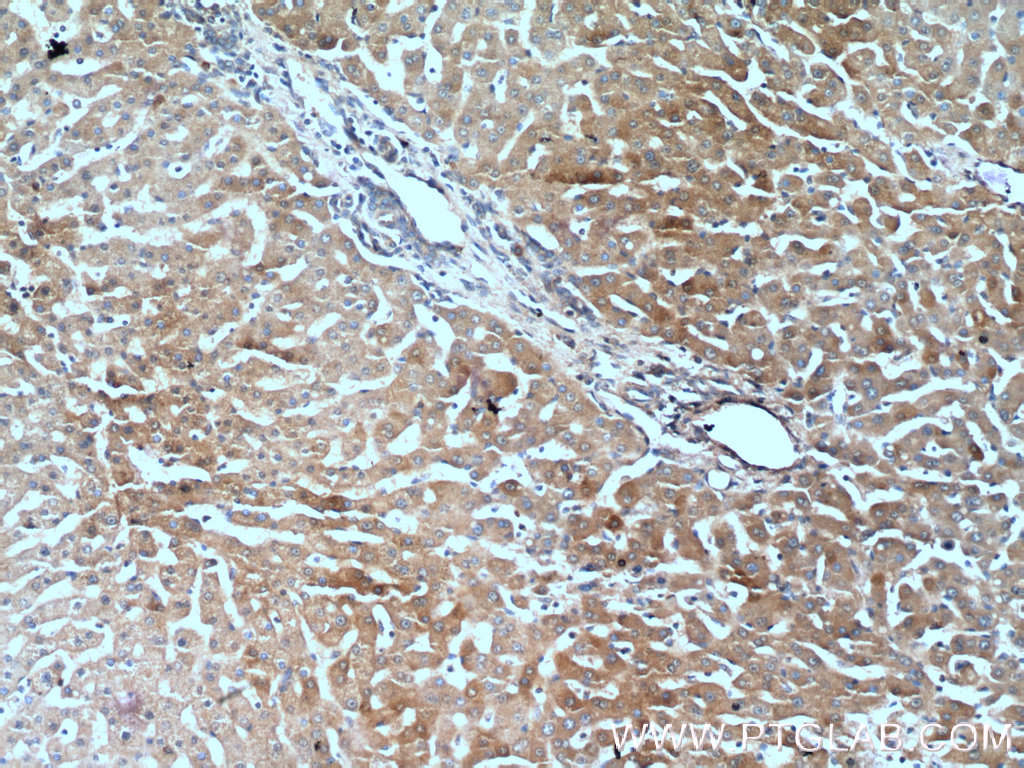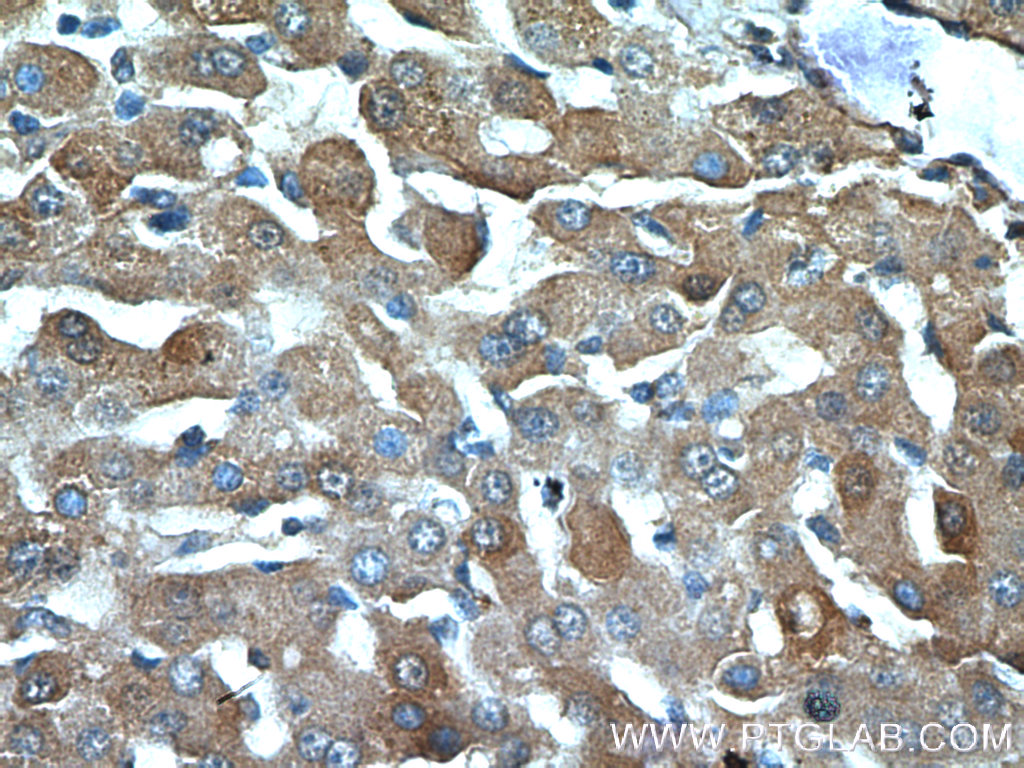验证数据展示
经过测试的应用
| Positive IHC detected in | human liver tissue, mouse kidney tissue Note: suggested antigen retrieval with TE buffer pH 9.0; (*) Alternatively, antigen retrieval may be performed with citrate buffer pH 6.0 |
推荐稀释比
| 应用 | 推荐稀释比 |
|---|---|
| Immunohistochemistry (IHC) | IHC : 1:50-1:500 |
| It is recommended that this reagent should be titrated in each testing system to obtain optimal results. | |
| Sample-dependent, Check data in validation data gallery. | |
产品信息
22263-1-AP targets Polycystin 1 in IHC, ELISA applications and shows reactivity with human, mouse samples.
| 经测试应用 | IHC, ELISA Application Description |
| 经测试反应性 | human, mouse |
| 免疫原 | Peptide 种属同源性预测 |
| 宿主/亚型 | Rabbit / IgG |
| 抗体类别 | Polyclonal |
| 产品类型 | Antibody |
| 全称 | polycystic kidney disease 1 (autosomal dominant) |
| 别名 | PBP, PC1, PKD1, Polycystin 1 |
| 计算分子量 | 463 kDa |
| GenBank蛋白编号 | NM_000296 |
| 基因名称 | Polycystin 1/PKD1 |
| Gene ID (NCBI) | 5310 |
| RRID | AB_2879053 |
| 偶联类型 | Unconjugated |
| 形式 | Liquid |
| 纯化方式 | Antigen affinity purification |
| UNIPROT ID | P98161 |
| 储存缓冲液 | PBS with 0.02% sodium azide and 50% glycerol , pH 7.3 |
| 储存条件 | Store at -20°C. Stable for one year after shipment. Aliquoting is unnecessary for -20oC storage. |
背景介绍
Polycystin 1 (PC1) is also named as PKD1, and Autosomal dominant polycystic kidney disease 1 protein, and belongs to the polycystin family. PKD1 and PKD2 are formed component of a heteromeric calcium-permeable ion channel. PKD1 is considered an orphan, atypical G protein coupled receptor complexed with TRPP2 (Polycystin 2 or PKD2), a Ca2+-permeable ion channel (PMID:27214281). PKD1 is involved in renal tubulogenesis (PMID:12482949).
实验方案
| Product Specific Protocols | |
|---|---|
| IHC protocol for Polycystin 1 antibody 22263-1-AP | Download protocol |
| Standard Protocols | |
|---|---|
| Click here to view our Standard Protocols |


